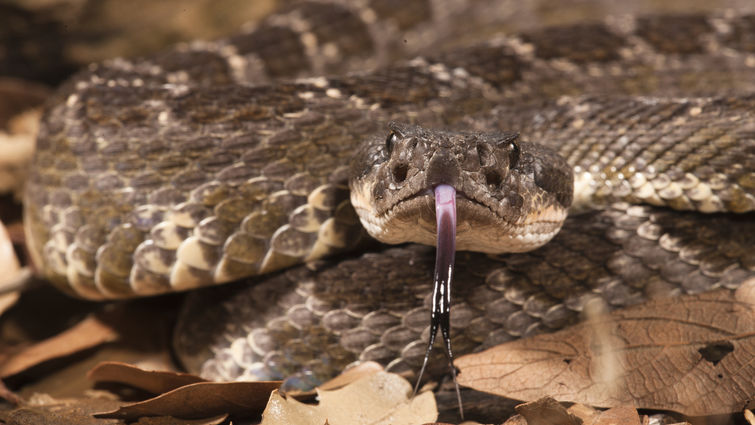

A new study has found that the southern Pacific rattlesnake on Santa Catalina Island, located off the southern California coast, exhibited increased defensiveness compared to their mainland counterparts, contradicting a phenomenon of “island tameness,” where animals living on islands typically display less defensive behavior due to the lack of natural predators.
The study, led by William Hayes, PhD, professor of biology at Loma Linda University School of Medicine, reports that not only did the Catalina Island snakes lack tameness, but took more time to be captured, bit more frequently, and delivered greater quantities of venom during a standardized protocol designed to measure their levels of defensiveness.
Researchers compared the defensive behavior of the mainland snakes and the insular (island) snake population and found that high densities of introduced non-native mammalian predators (feral cats, pigs, foxes) and antagonists (goat, sheep, mule deer) best explained the increased defensive behavior in the island snakes.
According to Dr. Hayes, the introduction of invasive mammals on Catalina Island has likely made the snakes more dangerous to humans that encounter them. Rattlesnakes are sensitive creatures that experience emotions and will respond to life-threatening situations and defend themselves.
The island snakes average smaller in size than those on the mainland, and researchers indicate that another potential cause of the heightened defensiveness is that these snakes have developed unique strategies to acquire dangerous prey such as rodents, which are somewhat larger than those on the mainland.
The research not only contributes to understanding of island ecosystems but shows that the island population of southern Pacific rattlesnake exhibits paradoxically increased defensiveness and have likely adapted their behavior in response to interactions with the human introductions of the non-native predators and antagonists.
Loma Linda University School of Medicine’s Department of Earth and Biological Sciences has conducted research on the southern Pacific and other rattlesnake specifies for many years. The southern Pacific rattlesnake can be found throughout southern California, extending into northern Baja California, Mexico, as far south as Bahia San Juanico. The insular populations exist on two islands: Santa Catalina Island off the coast of Los Angeles, and Island Coronado Sur off the northern coast of Baja California, Mexico.
Hayes and graduate students at the School’s Department of Earth and Biological Sciences continue to explore the social and environmental factors that shape a rattlesnake's personality and what influences its exploratory and defensive behaviors. They are studying behaviors in multiple rattlesnake species throughout southern California ranging from the coast to inland valleys to desert habitats.
Learn more about the Department of Earth and Biological Sciences.


